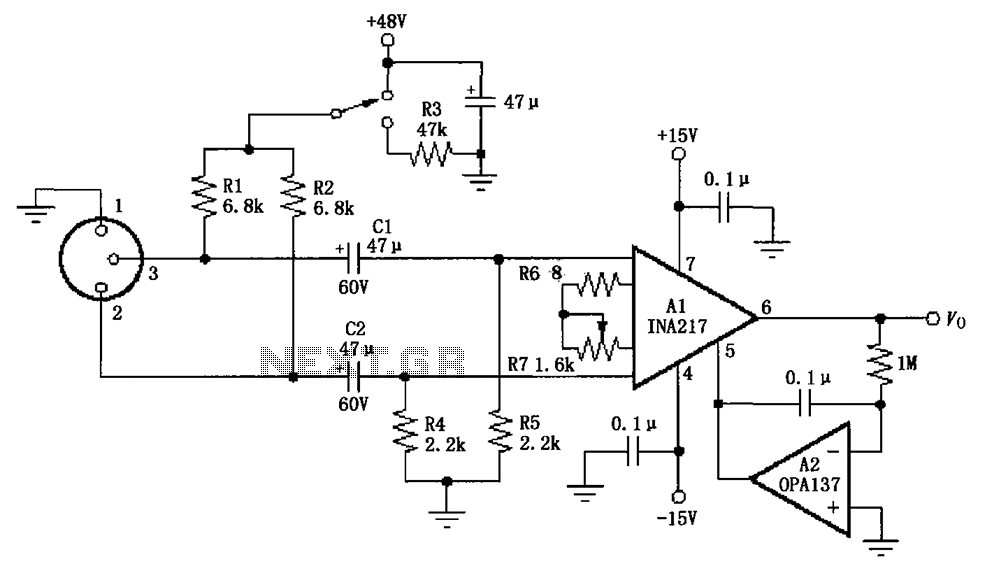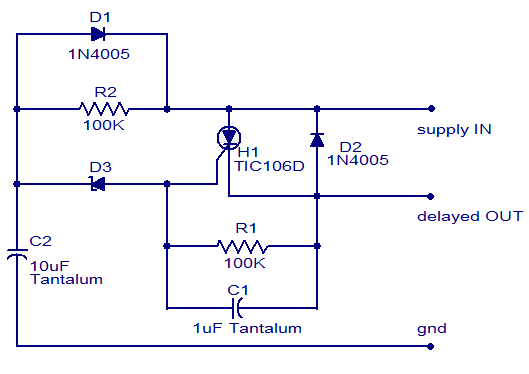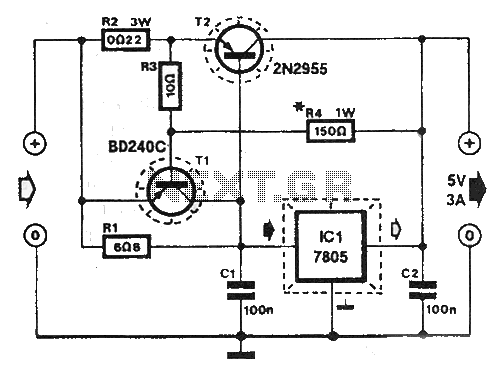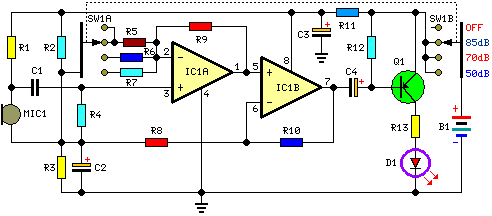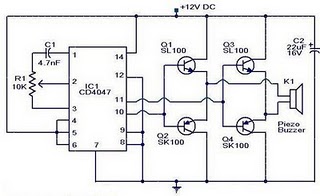
Photoelectric counting circuit diagram
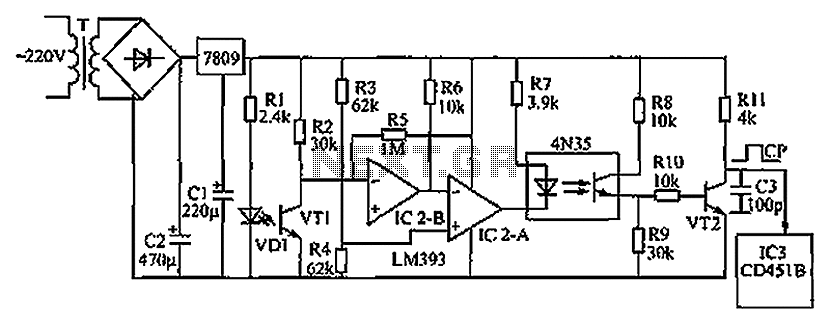
The circuit depicted in the figure operates as follows: when the phototransistor VT1 detects infrared light emitted by the infrared light-emitting diode, it enters a conductive state. This action causes the inverting input of comparator IC2-B, connected to pin 6 (low end) and pin 7 (high output), to apply a low signal to the inverting input terminal of comparator IC2-A. Consequently, the output pin of IC2-A goes low, activating the optocoupler LED in the 4N35, which in turn turns on the corresponding photodiode. As a result, transistor VT2 conducts, leading to a low output at the collector of VT2. When an object obstructs the infrared light path between the light-emitting diode VD1 and the phototransistor VT1, VT1 ceases to conduct. This results in a high output at pin 1 of IC2-A, turning off the 4N35 optocoupler and subsequently shutting down VT2, which causes the collector output of VT2 to go high. The transition of VT2's collector output to high generates a pulse signal that is counted by a decimal counter and subsequently sent to a decoding display circuit to indicate the corresponding data.
The described circuit functions as an object detection system utilizing infrared light transmission and reception. The primary components include an infrared light-emitting diode (VD1), a phototransistor (VT1), comparators (IC2-A and IC2-B), an optocoupler (4N35), and a secondary transistor (VT2) for signal processing.
Upon activation, the infrared LED emits light that is continuously monitored by the phototransistor. The circuit is designed to detect interruptions in the infrared beam caused by physical objects passing between the emitter and the receiver. When the beam is unobstructed, the phototransistor remains conductive, maintaining a low output at the comparator IC2-A, which keeps the optocoupler and VT2 activated.
The logic of the circuit relies on the behavior of the comparators, which compare input voltages and determine the output state based on the presence or absence of infrared light. The transition from low to high output at the collector of VT2 serves as a pulse signal, which is essential for counting events (i.e., the passing of objects). This pulse signal can be processed further by a decimal counter, which accumulates counts and sends the data to a display circuit for visual representation.
In summary, the circuit effectively monitors the presence of objects using infrared technology, allowing for applications in automation, counting systems, or security monitoring. The design emphasizes reliability and responsiveness, making it suitable for various electronic applications that require object detection and counting. Circuit shown in Figure, when the phototransistor VT1 receives infrared light-emitting diode to the infrared light emitted, VT1 conduction, the inverting input of the comparato r IC2-B 6 feet low end, 7 feet high output, applied to the comparator IC2-a inverting input terminal, so that a pin output low, the optocoupler LEDs light 4N35 within the corresponding photodiode is turned on, the transistor VT2 are conduction, VT2 collector output low. When an object passes between the infrared light-emitting diodes VD1 and receiver tube VT1, infrared rays are blocked, VT1 off, 1 foot high output of IC2-A, 4N35 off, VT2 off, VT2 collector output high, so when there is when an object by VT1, VT2 collector output on it counted pulse signal which is sent to a decimal counter, then sent decoding display circuit, showing corresponding data.
The described circuit functions as an object detection system utilizing infrared light transmission and reception. The primary components include an infrared light-emitting diode (VD1), a phototransistor (VT1), comparators (IC2-A and IC2-B), an optocoupler (4N35), and a secondary transistor (VT2) for signal processing.
Upon activation, the infrared LED emits light that is continuously monitored by the phototransistor. The circuit is designed to detect interruptions in the infrared beam caused by physical objects passing between the emitter and the receiver. When the beam is unobstructed, the phototransistor remains conductive, maintaining a low output at the comparator IC2-A, which keeps the optocoupler and VT2 activated.
The logic of the circuit relies on the behavior of the comparators, which compare input voltages and determine the output state based on the presence or absence of infrared light. The transition from low to high output at the collector of VT2 serves as a pulse signal, which is essential for counting events (i.e., the passing of objects). This pulse signal can be processed further by a decimal counter, which accumulates counts and sends the data to a display circuit for visual representation.
In summary, the circuit effectively monitors the presence of objects using infrared technology, allowing for applications in automation, counting systems, or security monitoring. The design emphasizes reliability and responsiveness, making it suitable for various electronic applications that require object detection and counting. Circuit shown in Figure, when the phototransistor VT1 receives infrared light-emitting diode to the infrared light emitted, VT1 conduction, the inverting input of the comparato r IC2-B 6 feet low end, 7 feet high output, applied to the comparator IC2-a inverting input terminal, so that a pin output low, the optocoupler LEDs light 4N35 within the corresponding photodiode is turned on, the transistor VT2 are conduction, VT2 collector output low. When an object passes between the infrared light-emitting diodes VD1 and receiver tube VT1, infrared rays are blocked, VT1 off, 1 foot high output of IC2-A, 4N35 off, VT2 off, VT2 collector output high, so when there is when an object by VT1, VT2 collector output on it counted pulse signal which is sent to a decimal counter, then sent decoding display circuit, showing corresponding data.
